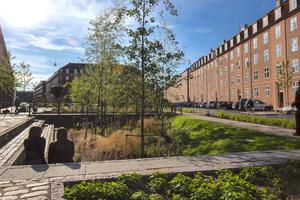A sea lion sickened by toxic algae attacked a teenage girl in Long Beach, California, on Sunday, the latest episode of erratic behavior from affected animals.
When 15-year-old Phoebe Beltran felt teeth sink into her arm, she initially thought she was being attacked by a shark, the Los Angeles Times reported, before seeing a sea lion poke its head above the water. Beltran was taken to the emergency room with minor injuries.
The attack comes on the heels of an incident last month in Oxnard, California, when a poisoned sea lion bit a surfer. The surfer, RJ LaMendola, described the animal as “feral, almost demonic, devoid of the curiosity or playfulness I’d always associated with sea lions.”
California officials say they are receiving more than a hundred calls daily about sea lions and dolphins that have been sickened by a massive algae bloom. Algae are releasing a potent toxin, domoic acid, into the water, which is causing sea lions to become aggressive, experience seizures, or go comatose. With enough exposure, sea lions can suffer permanent brain damage.
The algae bloom is fueled by the seasonal upwelling of nutrient-rich waters. But scientists say that warmer waters are also a factor, and that ash from recent wildfires, a source of nutrients, may further be spurring the growth of algae.
Algae blooms are hitting with growing regularity, experts say. For the fourth year in a row, toxic algae are surging along Southern California, straining officials charged with ministering to the dozens of poisoned sea lions and dolphins that have washed ashore.
“It does take an emotional toll in the field,” said John Warner, head of the Marine Mammal Care Center in Los Angeles. “Year after year, it’s getting tough.”
ALSO ON YALE E360
How Climate Change Puts the Safety of Drinking Water at Risk



